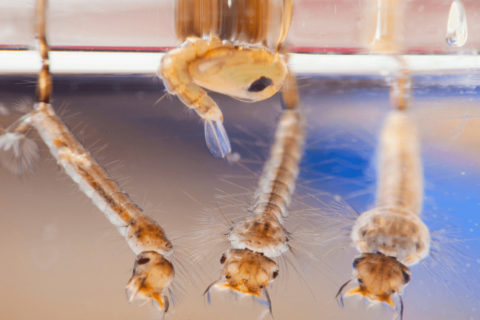What You Need to Know About Crickets
They are the noisy neighbors you never signed up for! Those hopping pests that may enter your home or tear through your garden are known as crickets! Crickets are often mistaken for the infamous grasshopper. There are a few distinguishing features to differentiate between the two. However, this guide will help you learn the ins and outs of cricket behavior. Between their chirping and chewing, crickets can be quite the lifestyle menace. This article will help you remove them from your home and yard before they can do any serious damage.
How can you tell the difference between grasshoppers and crickets?
Looking at their appearance alone can be very deceiving as they look alike to most people. However, crickets are most often black or brown with only a few taking on the green pigmentation of the grasshopper. They also have long antennae that adorn their roundheads and strong hind legs giving them a very grasshopper-like appearance. The exception being that grasshoppers have shorter antenna than most crickets. To truly identify a cricket, you need to observe their behaviors. Their actions will help you rid yourselves of the issues they could potentially cause.
Now that we know we cannot always trust our eyes to single out a cricket, we must rely on our ears. Male crickets chirp when they are fertile and able to mate. They rub their wings together to generate a chirping sound that echoes around your home. This noise entices female crickets to join them in mating. Often a sound produced to signal that a mating was successful may also be heard. So, a lot of chirping throughout your home could result in the birth of many more crickets. This can be a large annoyance should the crickets enter your home and mate there.
The behaviors of a cricket versus a grasshopper are very different and will help you further your investigation into the pest infestation. Grasshoppers are diurnal, or daytime, insects who hunt and mate while the sun is out. Crickets, however, are nocturnal, and this is why their chirps are heard during the late hours of the night. That chirping sound grasshoppers make is different than crickets chirping because the sound is generated from the insect’s hind legs rubbing together. If you observe this behavior, then you can confirm the pest is indeed a grasshopper.
What damage can crickets do to your home or yard?
The damage that can be done by a single cricket is minimal. However, should a large population form in or around your home, you could begin to notice some sparseness in your garden whether it be made up of fruits and vegetables or flowers. Crickets will feed on the foliage causing harm to the surrounding environment if left untreated. They will also dig and lay their eggs in the soil surrounding your home. Crickets lay around 10 eggs at a time depending on their type and this can cause a rapid population spike in and around your property.
Luckily, crickets pose little physical threat to yourself or your beloved pets. Their mouths are too small to cause any harm in a bite and they are in no way venomous to us. However, they can and will eat most pet foods, so it is important to keep all pet food stored somewhere safe and sealed from all elements. Some pets will try and chase or possibly even eat these crickets but fear not as they are not poisonous to many household pets. As far as their damage to your home goes, they are mainly just an annoyance as their chirping can be loud and only increases in volume the more mates it attracts. Make sure to keep your eyes and ears open for these chirping pests.

